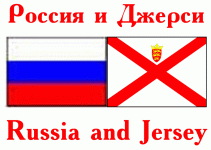


l remember vividly first seeing, from my home on Victoria Avenue, the column of Russian prisoners coming from the harbour - shuffling men, filthy, ashen grey, confused and de-humanized. Their Organisation Todt guards prodded them and shouted at these exhausted men as if they had been a herd of recalcitrant animals.
About 6,000 were to arrive. They were housed in eleven camps, mainly in the west of the island. In addition to the Russians there were about 2,000 Spanish republican refugees from France who had been handed over as a gift by the Vichy government, and numbers of people from elsewhere - Poles, North Africans and even Dutch. These other groups were not technically slave workers. They were forced labour paid in Reichmarks, a currency without international backing, but legal in occupied territories. They could leave the camps on certain days and mix with local people.
All these men were engaged on the building of the Channel Island section (said to be stronger than anywhere else along the French coastline) of the Atlantic Wall. They built sea walls, gun emplacements and underground works, many of which can still be seen today.
The working conditions for the Russians were in no way comparable with those of the other national groups. The Germans considered them to be sub-human and that was that, When the sea wall at St. Brelades was being built many Jersey people witnessed beatings with shovels and other ill-treatment.
The food the Russians should have received from their captors came from France put there was much pilfering en route to Jersey for sale on the black market so there was a high death rate from malnutrition and associated illness such as tuberculosis.
The Todt organisation was responsible for much of this stealing. It was an organisation formed by Dr Fritz Todt to provide labour for military construction work. The German personnel were foremen and administrative staff and not soldiers but they wore a khaki uniform. They tended in large measure to be drawn from the scum which exists in any society and many had been brought from prisons where they were serving time for crimes of violence.
Stories circulated widely of manslaughter, of bodies thrown into wet concrete. Perhaps there was some truth in them but we have no evidence today. After the Liberation in 1945, when all concerned were still in the island, an enquiry was instituted by two British intelligence officers, Major Hargreaves and a captain whose name I have forgotten. They wanted to gather evidence to bring to justice the principal perpetrators whilst witnesses were available. I was engaged as a Spanish interpreter and we questioned each Spanish worker independently without getting anything but the vaguest information, known to "everyone" it seemed except the individuals whom we questioned.
The military attaché from the Soviet Embassy, a Major Gruzdev, came to collect his men, all of whom had to return to the USSR. He was present at this questioning, which was in a bedroom of the old British Hotel, Broad Street (now part of Barclays Bank). He showed no interest whatever, usually lying on the bed with his boots on, sleeping off his vodka. He thought that all Soviet citizens in occupied territory were equally treacherous in law whether they had allowed themselves to be taken prisoner or even when they had volunteered to fight for the Germans (the so-called Russian Army of Liberation). Statements that the British authorities engineered a cover-up of war crimes are just not true.
But to get back to the Occupation. Many Russians escaped from their work parties or camps and roamed the countryside, sleeping rough. Robberies were common. Friends of mine living in St. Peter nightly brought their hens into the kitchen and their milking goat was put into a cupboard under the stairs. Most of these escapees were recaptured but a few found refuge with local families.
There was: